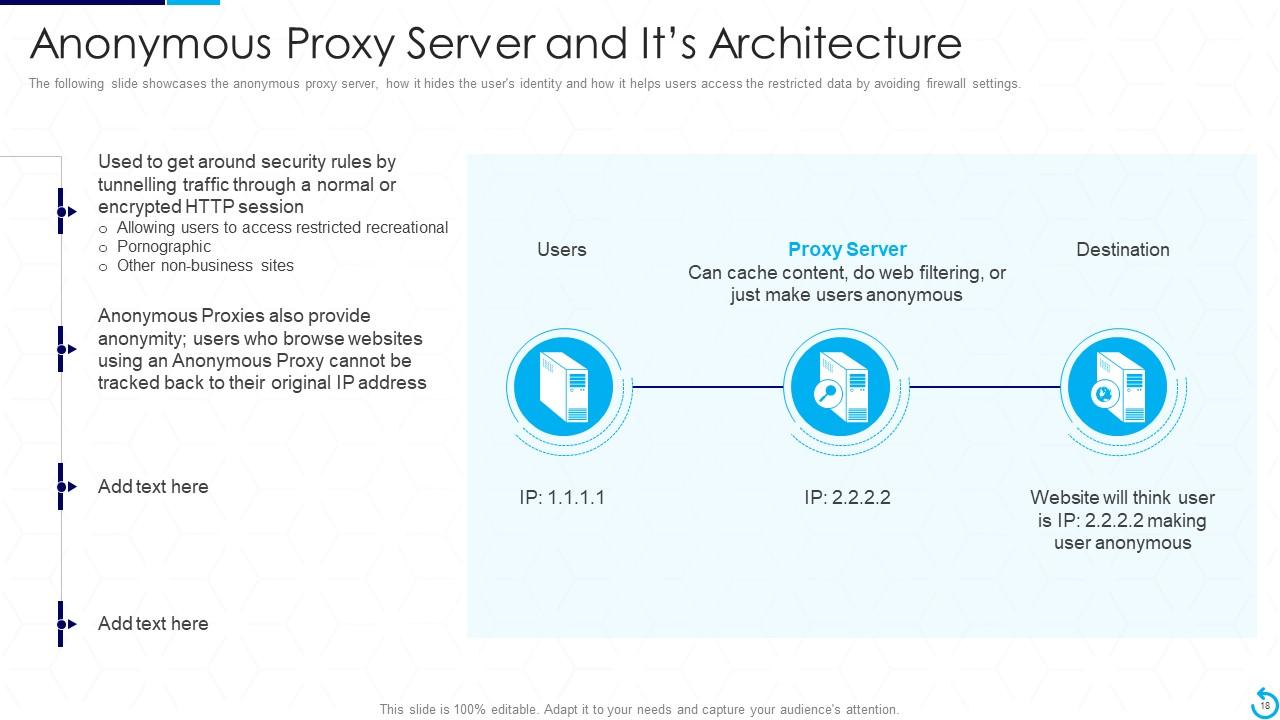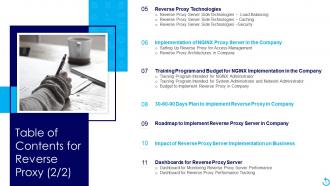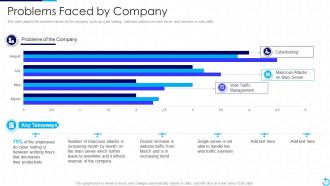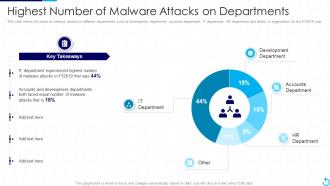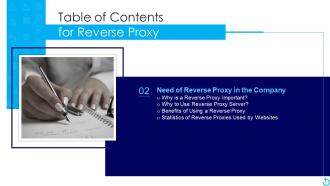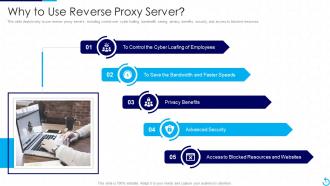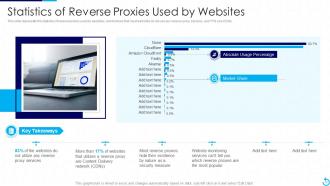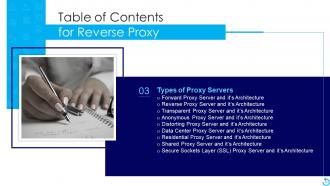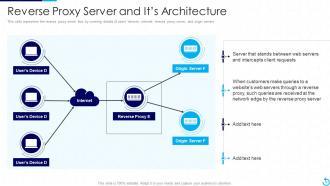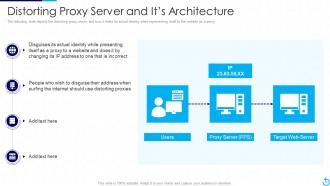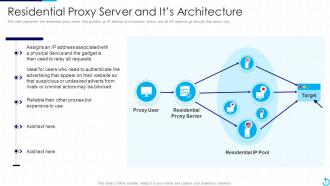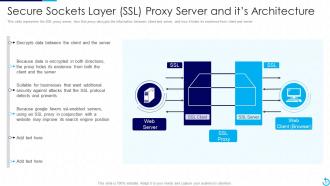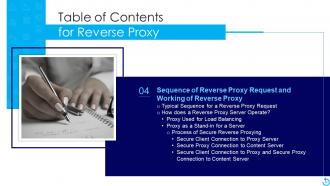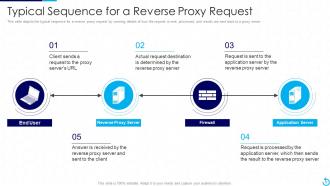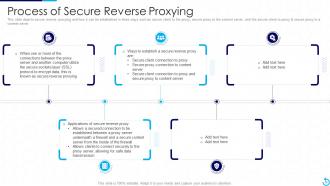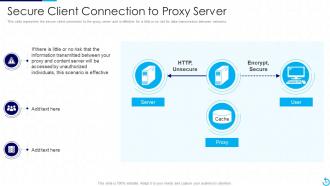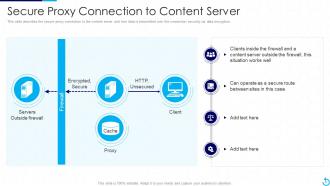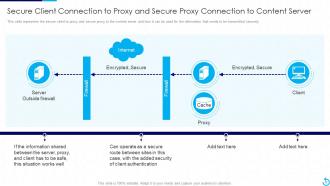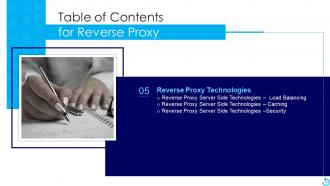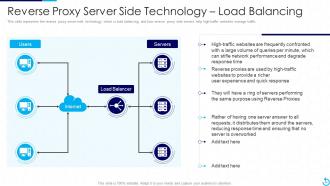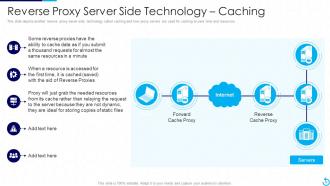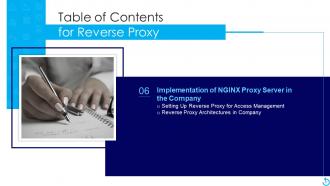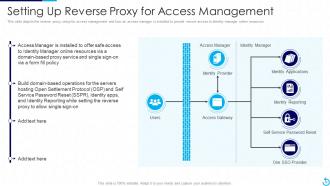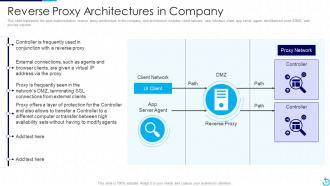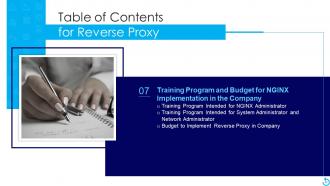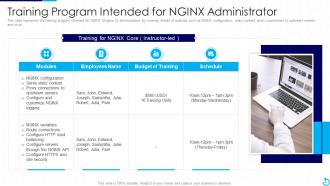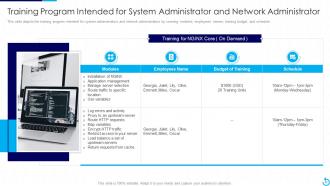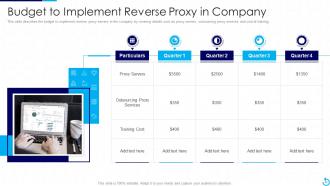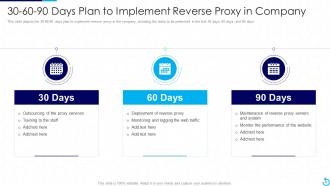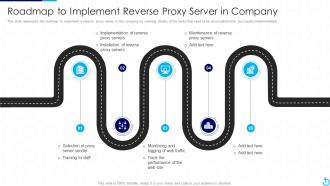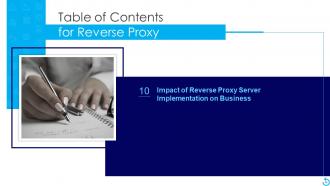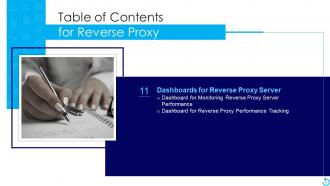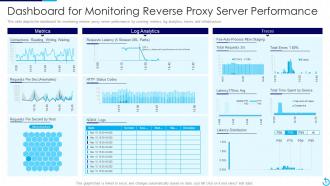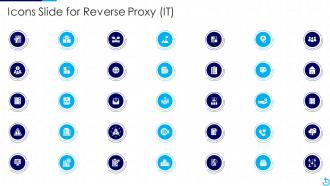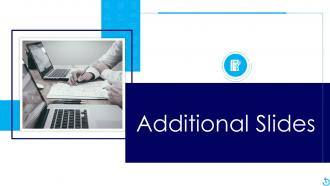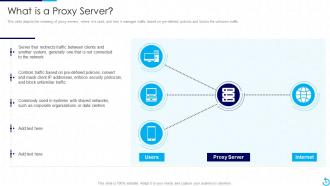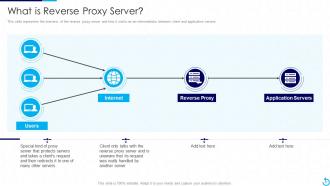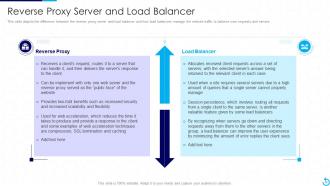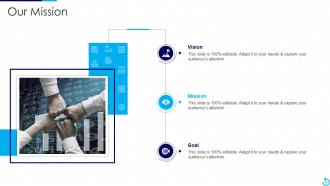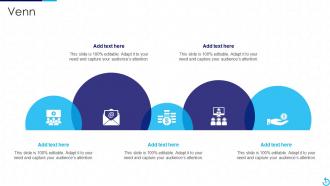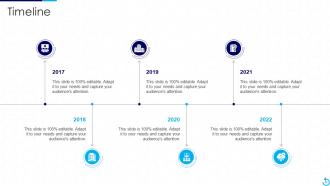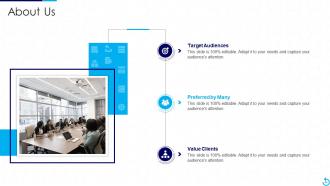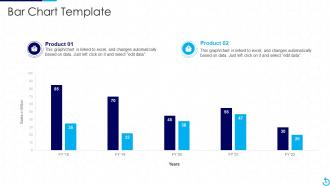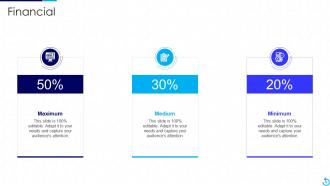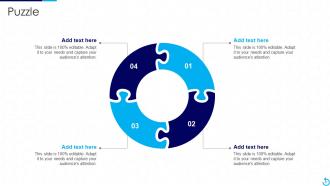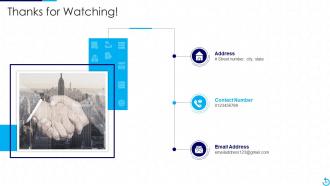Reverse Proxy IT Powerpoint Presentation Slides
A reverse proxy is a kind of proxy server that resides under a closed networks firewall and routes customer queries to the correct backend server. Check out our professionally designed Reverse Proxy PowerPoint Presentation to get a brief idea about problems experienced by the company and how to overcome these problems by implementing reverse proxy. In this presentation, we have covered the companys current situation, the need for reverse proxy, and various types of the reverse proxy. In addition to it, this Reverse Proxy Load Balancer PPT incorporates a sequence of reverse proxy requests, its working and reverse proxy server-side technologies. Moreover, this Reverse Proxy PPT caters to a training program for network administrators, a budget, and a 30-60-90 days plan for implementing reverse proxy in the company. Lastly, this Reverse Proxy Load Balancer deck comprises a roadmap and talks about the impacts of reverse proxy implementation on business. It also includes a dashboard that can monitor reverse proxy server performance. Download our 100 percent editable and customizable template, which is also compatible with Google Slides.
- Google Slides is a new FREE Presentation software from Google.
- All our content is 100% compatible with Google Slides.
- Just download our designs, and upload them to Google Slides and they will work automatically.
- Amaze your audience with SlideTeam and Google Slides.
-
Want Changes to This PPT Slide? Check out our Presentation Design Services
- WideScreen Aspect ratio is becoming a very popular format. When you download this product, the downloaded ZIP will contain this product in both standard and widescreen format.
-

- Some older products that we have may only be in standard format, but they can easily be converted to widescreen.
- To do this, please open the SlideTeam product in Powerpoint, and go to
- Design ( On the top bar) -> Page Setup -> and select "On-screen Show (16:9)” in the drop down for "Slides Sized for".
- The slide or theme will change to widescreen, and all graphics will adjust automatically. You can similarly convert our content to any other desired screen aspect ratio.
Compatible With Google Slides

Get This In WideScreen
You must be logged in to download this presentation.
PowerPoint presentation slides
Deliver this complete deck to your team members and other collaborators. Encompassed with stylized slides presenting various concepts, this Reverse Proxy IT Powerpoint Presentation Slides is the best tool you can utilize. Personalize its content and graphics to make it unique and thought provoking. All the sixty nine slides are editable and modifiable, so feel free to adjust them to your business setting. The font, color, and other components also come in an editable format making this PPT design the best choice for your next presentation. So, download now.
People who downloaded this PowerPoint presentation also viewed the following :
Content of this Powerpoint Presentation
Slide 1: This slide introduces Reverse Proxy (IT). State Your Company Name and begin.
Slide 2: This is an Agenda slide. State your agendas here.
Slide 3: This slide presents Table of Content for the presentation.
Slide 4: This is another slide continuing Table of Content for the presentation.
Slide 5: This slide highlights title for topics that are to be covered next in the template.
Slide 6: This slide depicts the problems faced by the company such as cyber loafing, malicious attack, etc.
Slide 7: This slide shows Highest Number of Malware Attacks on Departments.
Slide 8: This slide presents Cyber Attacks on the Main Server of Company.
Slide 9: This slide highlights title for topics that are to be covered next in the template.
Slide 10: This slide explains why reverse proxy is essential and how it imposes web application security.
Slide 11: This slide depicts why to use reverse proxy servers, including control over cyber loafing, bandwidth saving, etc.
Slide 12: This slide describes the benefits of using a reverse proxy server.
Slide 13: This slide displays Statistics of Reverse Proxies Used by Websites.
Slide 14: This slide highlights title for topics that are to be covered next in the template.
Slide 15: This slide represents Forward Proxy Server and it’s Architecture.
Slide 16: This slide showcases Reverse Proxy Server and It’s Architecture.
Slide 17: This slide shows Transparent Proxy Server and It’s Architecture.
Slide 18: This slide presents Anonymous Proxy Server and It’s Architecture.
Slide 19: This slide displays Distorting Proxy Server and It’s Architecture.
Slide 20: This slide represents Data Center Proxy Server and It’s Architecture.
Slide 21: This slide represents the residential proxy server that provides an IP address of a hardware device.
Slide 22: This slide showcases Shared Proxy Server and It’s Architecture.
Slide 23: This slide shows Secure Sockets Layer (SSL) Proxy Server and it’s Architecture.
Slide 24: This slide highlights title for topics that are to be covered next in the template.
Slide 25: This slide presents Typical Sequence for a Reverse Proxy Request.
Slide 26: This slide explains the working of a reverse proxy server in two ways proxying for load balancing.
Slide 27: This slide depicts the proxy used for load balancing, and it includes DNS server, reverse proxy, cache, etc.
Slide 28: This slide represents proxy as a stand-in for a server type of implementation of reverse proxy.
Slide 29: This slide showcases Process of Secure Reverse Proxying.
Slide 30: This slide shows Secure Client Connection to Proxy Server.
Slide 31: This slide presents Secure Proxy Connection to Content Server.
Slide 32: This slide displays Secure Client Connection to Proxy and Secure Proxy Connection to Content Server.
Slide 33: This slide highlights title for topics that are to be covered next in the template.
Slide 34: This slide represents the reverse proxy server-side technology, which is load balancing.
Slide 35: This slide depicts another reverse proxy server-side technology called caching.
Slide 36: This slide explains the reverse proxy server-side technology, that is security.
Slide 37: This slide highlights title for topics that are to be covered next in the template.
Slide 38: This slide shows Setting Up Reverse Proxy for Access Management.
Slide 39: This slide presents Reverse Proxy Architectures in Company.
Slide 40: This slide highlights title for topics that are to be covered next in the template.
Slide 41: This slide displays Training Program Intended for NGINX Administrator.
Slide 42: This slide represents Training Program Intended for System Administrator and Network Administrator.
Slide 43: This slide showcases Budget to Implement Reverse Proxy in Company.
Slide 44: This slide highlights title for topics that are to be covered next in the template.
Slide 45: This slide shows 30-60-90 Days Plan to Implement Reverse Proxy in Company.
Slide 46: This slide highlights title for topics that are to be covered next in the template.
Slide 47: This slide presents Roadmap to Implement Reverse Proxy Server in Company.
Slide 48: This slide highlights title for topics that are to be covered next in the template.
Slide 49: This slide displays Impact of Reverse Proxy Server Implementation on Business.
Slide 50: This is another slide continuing Impact of Reverse Proxy Server Implementation on Business.
Slide 51: This slide highlights title for topics that are to be covered next in the template.
Slide 52: This slide represents Dashboard for Monitoring Reverse Proxy Server Performance.
Slide 53: This slide showcases Dashboard for Reverse Proxy Performance Tracking.
Slide 54: This slide displays Icons for Reverse Proxy (IT).
Slide 55: This slide is titled as Additional Slides for moving forward.
Slide 56: This slide depicts the meaning of proxy servers, where it is used, and how it manages traffic.
Slide 57: This slide represents the overview of the reverse proxy server and how it works.
Slide 58: This slide presents Comparison Between Forward Proxy and Reverse Proxy Server.
Slide 59: This slide displays Reverse Proxy Server and Load Balancer.
Slide 60: This is Our Mission slide with related imagery and text.
Slide 61: This slide shows Post It Notes. Post your important notes here.
Slide 62: This slide depicts Venn diagram with text boxes.
Slide 63: This is a Timeline slide. Show data related to time intervals here.
Slide 64: This is About Us slide to show company specifications etc.
Slide 65: This slide presents Bar chart with two products comparison.
Slide 66: This is a Financial slide. Show your finance related stuff here.
Slide 67: This slide contains Puzzle with related icons and text.
Slide 68: This slide displays Mind Map with related imagery.
Slide 69: This is a Thank You slide with address, contact numbers and email address.
Reverse Proxy IT Powerpoint Presentation Slides with all 74 slides:
Use our Reverse Proxy IT Powerpoint Presentation Slides to effectively help you save your valuable time. They are readymade to fit into any presentation structure.
FAQs
A reverse proxy server is a server that sits between the client and the server and forwards client requests to the server. It is important because it helps improve security, load balancing, and caching, among other benefits.
Some benefits of using a reverse proxy server include improved security, load balancing, caching, and better performance of web applications.
Cyber loafing is the act of employees using work hours to browse the internet for non-work-related activities. A reverse proxy server can help control cyber loafing by monitoring and controlling the websites that employees can access during work hours.
There are several types of proxy servers, including forward proxy servers, reverse proxy servers, transparent proxy servers, anonymous proxy servers, distorting proxy servers, data centre proxy servers, residential proxy servers, and shared proxy servers.
A reverse proxy server improves web application security by acting as a buffer between the client and the server, which makes it more difficult for attackers to access the server directly. Additionally, it can provide features such as SSL termination, rate limiting, and protection against Distributed Denial-of-Service (DDoS) attacks.
-
Easily Understandable slides.
-
Best Representation of topics, really appreciable.



















